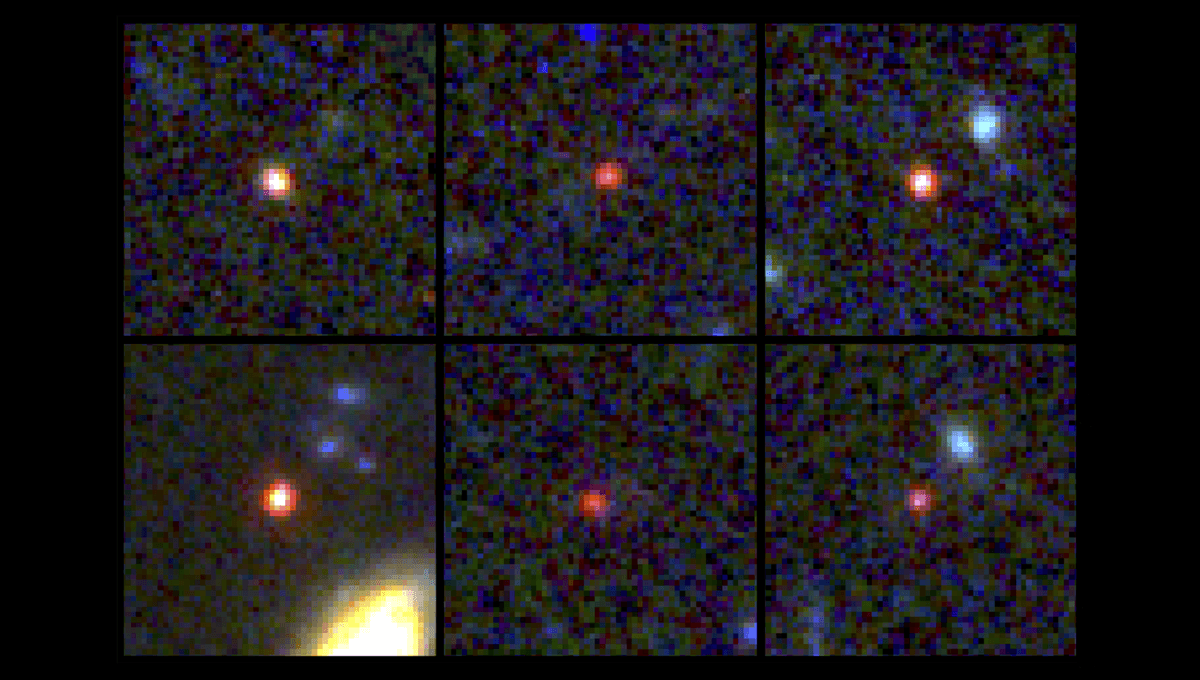
An international team of astronomers has estimated the masses of a handful of very distant galaxies observed by JWST, and found themselves with quite a puzzle on their hands. Their masses are too high for being that early in the universe – there isn’t enough gas and enough time to make galaxies that big.
“JWST can cover more of the wavelengths of the galaxy, getting more detail and more information. That extra information and extra detail are important because it allows astronomers to try to estimate how many stars are in the galaxy,” lead author Professor Ivo Labbé, from the Swinburne University of Technology, told IFLScience. “That’s what we did. And it was quite a surprise because the number of stars that were in the galaxies was about a factor of ten higher than we would have expected from the models”
These are the first images of a brand-new telescope and we see things that don’t make a lot of sense. Or if we use our standard techniques we get an answer that is almost impossible
Professor Labbé
The six galaxies in question are not among the most distant spotted by the space observatory, but they are still pretty far away – their light comes from between 500 and 700 million years after the Big Bang. These galaxies are supposed to be small growing objects, but they seem to have a mass of up to ten billion times that of our Sun, which is already incredibly big for the time. However, one of them has a potential mass of 100 billion times the Sun. That’s roughly how much the Milky Way weighs today – and that amount of stars are placed in an object 30 times more compact!
So, let’s look at the issues that the presence of these galaxies creates. First is the issue of time. The models that explain how galaxies form are good, but far from perfect. Based on them, even with 100 percent efficiency, you can’t turn enough gas into stars to create so many massive galaxies. These models can be tweaked and adapted and probably will change with JWST observations.
The other issue is that these galaxies are all from a very small area of the sky. Statistically, this implies the existence of an enormous population of massive galaxies back then – and there is simply not enough matter in the universe to create them. For this to be true, it would require challenging the fundamental model of cosmology. This model is backed by decades of confirming evidence, so it can’t be changed as easily as the model for the formation of galaxies.
“Extraordinary claims require extraordinary evidence. Would [this research] be considered extraordinary evidence? No! Obviously, these are the first images of a brand-new telescope and we see things that don’t make a lot of sense. Or if we use our standard techniques we get an answer that is almost impossible,” Professor Labbé told IFLScience.
“Does that mean that we immediately break the universe and overrule decades of cosmology? Probably not. What it probably means is that our techniques may not be completely appropriate at these early times,” Labbé continued. “There could be other things that are going on that we just simply haven’t accounted for.”
A possible candidate for what’s not been accounted for is the effect of supermassive black holes in these measurements. These gigantic black holes are expected to sit at the center of every galaxy, and when they are actively feeding, they can end up in a quasar state and release a lot of light. This could make the galaxies appear to have more stars than they actually do.
The team is currently conducting follow-ups on these galaxies, and one of the six seems to have an active supermassive black hole. The team is now working out the relative contribution between supermassive black holes and stars. More data on the other galaxies will be coming over the next 18 months.
The work is published in the journal Nature.
Source Link: Distant Galaxies Spotted By JWST Seem More Massive Than What Is Thought Possible